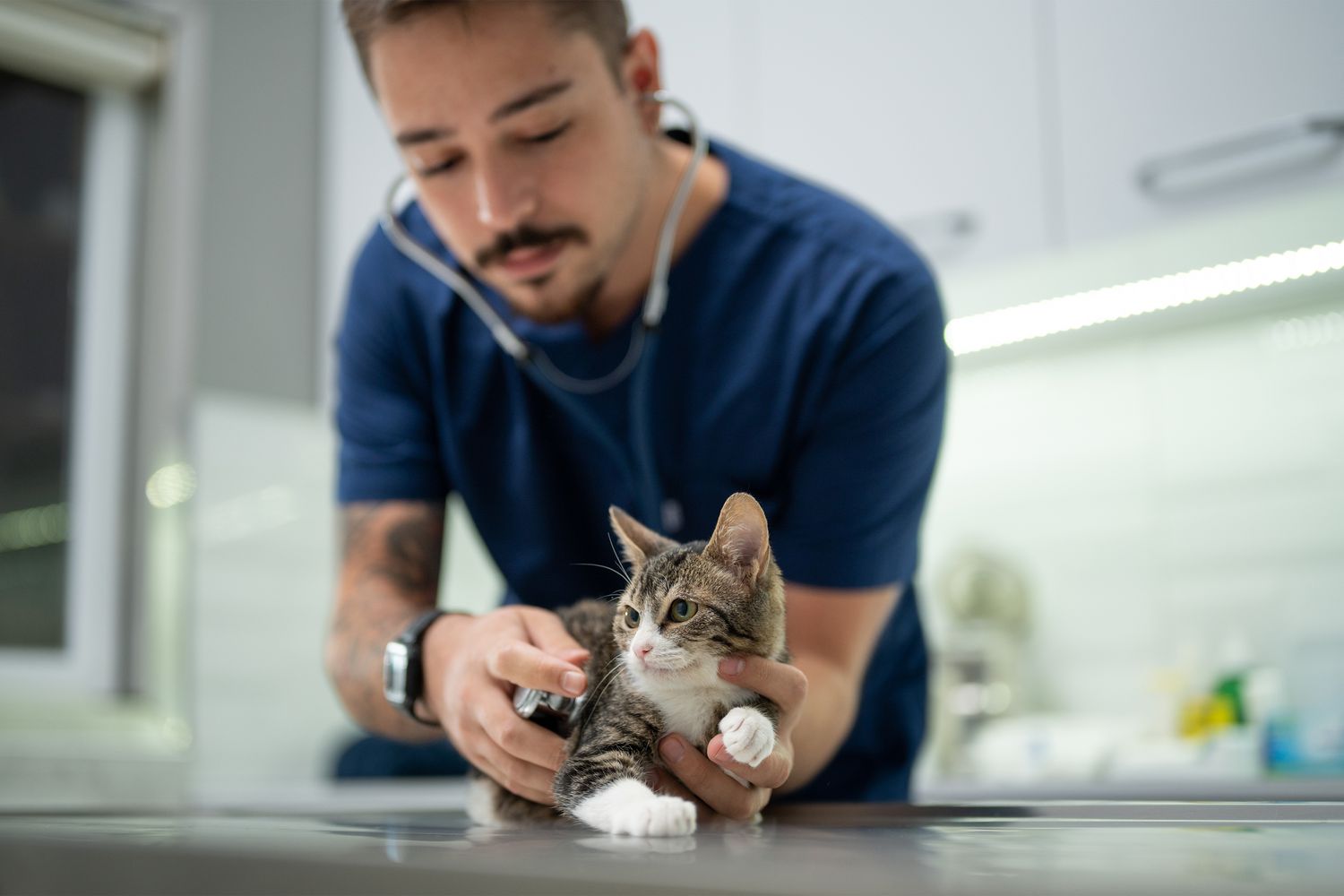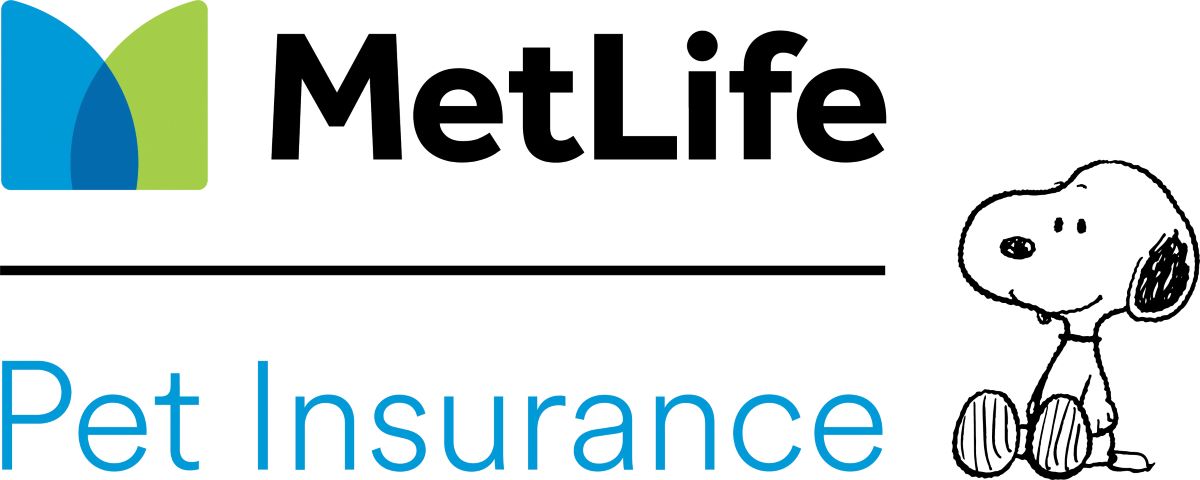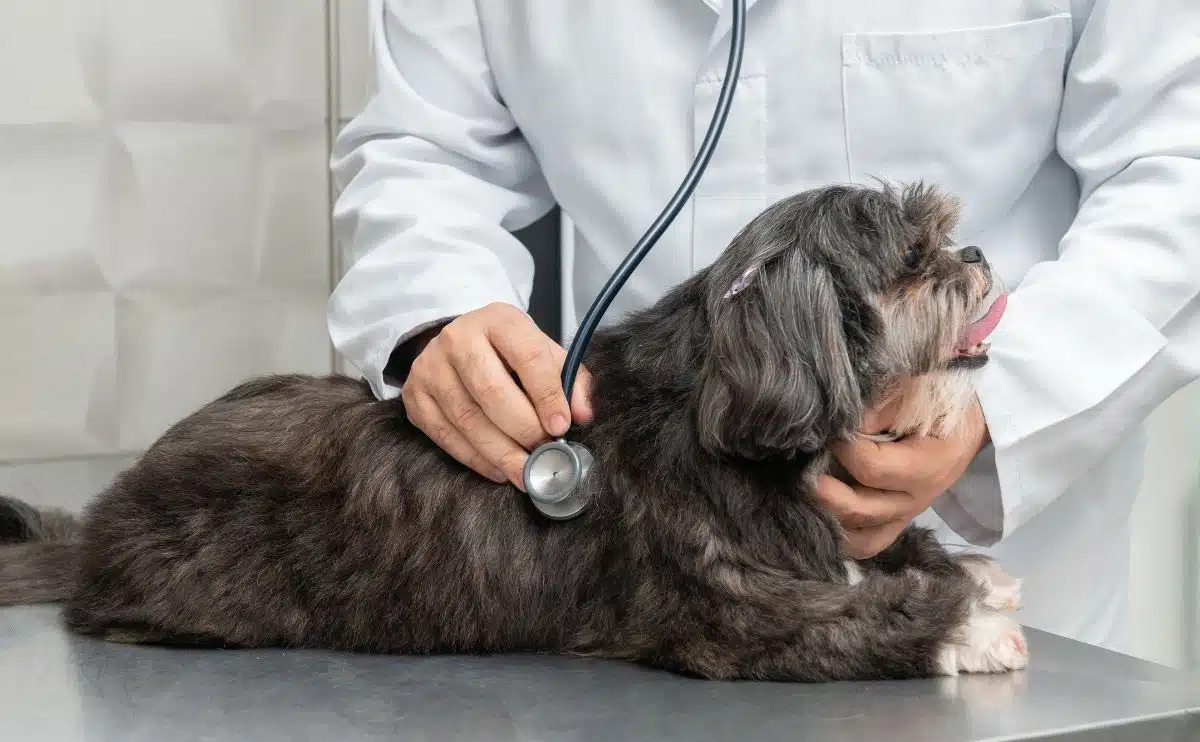

Finance
Which Pet Insurance Covers Neutering?
Modified: December 30, 2023
Looking for pet insurance that covers the cost of neutering? Find out which insurance providers offer financial coverage for this important procedure. Compare plans and save!
(Many of the links in this article redirect to a specific reviewed product. Your purchase of these products through affiliate links helps to generate commission for LiveWell, at no extra cost. Learn more)
Table of Contents
Introduction
Pet insurance has become increasingly popular among pet owners who want to ensure the health and well-being of their furry companions. It provides financial coverage for medical expenses related to accidents, illnesses, and preventive care. However, when it comes to pet insurance, it’s important to consider coverage for specific procedures, such as neutering.
Neutering, also known as spaying or castration, is a common surgical procedure performed on dogs and cats to prevent unplanned breeding and potential health issues. It offers numerous benefits, including decreased risk of certain cancers and behavioral improvements. As a responsible pet owner, you may be wondering if pet insurance covers the cost of neutering.
In this article, we will explore the world of pet insurance and delve into the topic of neutering coverage. We’ll discuss the importance of neutering, the different types of pet insurance coverage, and highlight some pet insurance companies that offer coverage for neutering. Additionally, we will provide valuable tips on how to choose the right pet insurance policy that covers neutering, and address some frequently asked questions that pet owners often have.
By the end of this article, you’ll have a clear understanding of what to look for when it comes to pet insurance coverage for neutering, helping you make an informed decision to protect the health and well-being of your beloved pet.
What is pet insurance?
Pet insurance is a type of insurance that provides financial coverage for veterinary expenses related to the health and well-being of your pet. Similar to health insurance for humans, pet insurance helps offset the cost of medical treatments, surgeries, medications, and sometimes even preventive care.
Unlike humans, pets cannot communicate their discomfort or pain, making it crucial for pet owners to have a safety net in place to ensure their pets receive proper care when they need it most. Pet insurance acts as that safety net, offering peace of mind and financial protection in the event of unexpected illnesses or accidents.
Most pet insurance policies work on a reimbursement basis. This means that you would pay the veterinary expenses upfront and then submit a claim to the insurance company for reimbursement. The amount reimbursed can vary depending on the specific policy and coverage opted for.
Pet insurance typically covers a wide range of medical services, including but not limited to:
- Accident and injury treatments
- Illnesses such as infections, allergies, and chronic conditions
- Diagnostic tests and imaging
- Surgical procedures
- Medications and prescriptions
- Cancer treatments
- Emergency veterinary care
- Specialist veterinary care
It’s important to note that most pet insurance policies have certain exclusions and limitations. Pre-existing conditions, cosmetic procedures, and breeding-related expenses may not be covered. It’s essential to thoroughly review the policy’s terms and conditions, including the fine print, to fully understand its coverage and limitations.
Having pet insurance can provide significant financial relief during unexpected veterinary emergencies, allowing you to focus on your pet’s well-being rather than worrying about the cost of care. It also encourages proactive and preventive care by covering routine check-ups, vaccinations, and preventive treatments, promoting the overall health and longevity of your furry friend.
The importance of neutering
Neutering, also known as spaying (for female pets) or castration (for male pets), is a surgical procedure that involves removing the reproductive organs of dogs and cats. This routine procedure offers numerous benefits for both pets and their owners.
One of the primary reasons to neuter your pet is to prevent unplanned breeding. The overpopulation of pets is a significant issue, leading to overcrowded shelters and euthanization of homeless animals. By neutering your pet, you can help reduce the number of unwanted litters and contribute to the overall welfare of animals.
Neutering also provides health benefits for your pet. For female pets, spaying eliminates the risk of uterine infections (pyometra) and greatly reduces the risk of mammary gland tumors and ovarian cancer. For male pets, castration eliminates the risk of testicular cancer and reduces the risk of prostate problems. Neutering can also help prevent certain behavioral issues, such as aggression and roaming.
When performed at the right age (typically between six months to one year old), the surgical procedure is safe and carries minimal risks. However, it’s essential to consult with your veterinarian to determine the optimal timing for your pet, as different breeds and sizes may require different considerations.
Neutering not only benefits your individual pet but also the community. It helps reduce the number of stray animals, decreases the chances of territorial marking and aggressive behaviors, and promotes a healthier pet population overall.
It’s important to note that the cost of neutering can vary depending on factors such as the type of animal, the size of the pet, and the location. In some cases, it can be a significant expense for pet owners. This is where the importance of pet insurance coverage for neutering comes into play, as it helps alleviate the financial burden associated with the procedure.
By getting your pet neutered and considering a pet insurance policy that covers the cost of neutering, you are not only being a responsible pet owner but also taking proactive steps to ensure the health and well-being of your beloved companion.
Types of pet insurance coverage
When considering pet insurance, it’s important to understand the different types of coverage available. While specific policies may vary among insurance providers, here are some common types of pet insurance coverage to consider:
- Accident coverage: This type of coverage helps with unexpected vet bills resulting from accidents, such as injuries from car accidents or mishaps at home.
- Illness coverage: Illness coverage helps cover the costs of veterinary care for illnesses or diseases your pet may develop. This may include infections, allergies, digestive disorders, or other chronic conditions.
- Preventive care coverage: Some pet insurance policies offer coverage for preventive care procedures, such as vaccinations, flea and tick prevention, heartworm medication, and annual wellness exams. Preventive care coverage can provide financial assistance for routine care expenses.
- Emergency coverage: Emergency coverage is designed to cover the costs of unexpected, life-threatening situations. This can include accidents, sudden illnesses, and emergency surgeries.
- Surgical coverage: Surgical coverage is aimed at covering the cost of surgical procedures your pet may require. This includes both elective procedures, such as neutering, as well as emergency surgeries.
- Cancer coverage: Cancer coverage can help with the costs associated with the diagnosis, treatment, and management of various types of cancer in pets. This coverage can be especially valuable, considering the high costs often associated with cancer treatments.
- Dental coverage: Dental coverage helps with the cost of dental treatments, including cleanings, X-rays, extractions, and even certain dental surgeries.
- Alternative therapy coverage: Some pet insurance policies include coverage for alternative therapies like acupuncture or chiropractic treatments. These therapies can be beneficial for pets with chronic conditions or for post-surgical rehabilitation.
It’s important to note that not all insurance providers offer the same coverage options. Some policies may include specific coverage automatically, while others may offer them as optional add-ons for an additional cost. Reviewing the coverage options and exclusions of different policies thoroughly will help you find the right pet insurance coverage that aligns with your pet’s needs and your budget.
Evaluating pet insurance policies
When it comes to choosing the right pet insurance policy, it’s essential to evaluate various factors to ensure you make an informed decision that suits your pet’s specific needs. Here are some key aspects to consider when evaluating pet insurance policies:
- Coverage: Assess the range of coverage offered by the policy. Consider the types of medical expenses that are covered, such as accidents, illnesses, preventive care, and surgical procedures. Look for policies that include coverage for neutering if it’s a priority for you.
- Exclusions and limitations: Pay attention to the exclusions and limitations stated in the policy. Understand what expenses are not covered, such as pre-existing conditions, breed-specific conditions, cosmetic procedures, or hereditary conditions.
- Deductibles and reimbursement levels: Check the deductible amount, which is the initial amount you must pay before the insurance coverage kicks in. Additionally, consider the reimbursement levels offered by the policy, as this will determine the percentage of the vet expenses that will be covered after the deductible has been met.
- Network of veterinarians: Some pet insurance providers have a network of preferred veterinarians, offering additional benefits or discounted rates for services. Check if your preferred veterinarian is included in the network, or if you’re required to use a specific network of providers.
- Waiting periods: Take note of any waiting periods before the coverage becomes effective. Waiting periods can vary for different types of services, so be aware of any waiting periods specifically related to neutering coverage.
- Premiums: Consider the cost of premiums, which is the amount you’ll pay regularly for the insurance policy. Compare premiums across different insurance providers to find an option that fits your budget while providing adequate coverage.
- Customer reviews and reputation: Research the customer reviews and reputation of the insurance provider. Look for feedback on their claim process, customer service, and overall satisfaction to gauge their reliability and responsiveness.
- Additional benefits: Some pet insurance policies may offer additional benefits such as coverage for prescription medications, behavioral therapy, lost pet advertising, or reimbursement for vacation cancellation due to a pet’s illness or injury. Evaluate these additional benefits to see if they align with your needs and provide added value.
Remember to carefully read the policy’s terms and conditions and ask questions to clarify any doubts before making a decision. Each pet insurance policy is unique, so it’s crucial to choose one that provides the coverage you require, matches your budget, and gives you peace of mind knowing that your pet is protected.
Pet insurance companies that cover neutering
When searching for a pet insurance policy that covers the cost of neutering, it’s important to consider various insurance providers and their offerings. While coverage options and availability may vary, here are a few pet insurance companies that commonly include coverage for neutering:
- Healthy Paws: Healthy Paws is a popular pet insurance provider that covers a wide range of veterinary services, including spaying and neutering. They offer comprehensive coverage for accidents, illnesses, surgeries, and even alternative therapies.
- Embrace: Embrace pet insurance offers customizable policies that can include coverage for neutering. They provide coverage for accidents, illnesses, and wellness care, with the option to add on additional coverage for spaying and neutering procedures.
- Petplan: Petplan pet insurance offers coverage for neutering as part of their comprehensive policies. They cover accidents, illnesses, hereditary conditions, and prescription medications, making them a suitable choice for pet owners seeking coverage for various veterinary expenses.
- Trupanion: Trupanion is known for its extensive coverage for accidents and illnesses, and they also include coverage for spaying and neutering procedures. They have a unique lifetime per-condition deductible that can be beneficial for pets with chronic conditions.
- ASPCA: The ASPCA offers pet insurance coverage for a range of veterinary services, including spaying and neutering. Their policies also cover accidents, illnesses, and preventive care, making them a comprehensive option for pet owners.
These are just a few examples of pet insurance companies that may provide coverage for neutering. However, it’s important to thoroughly research and compare policies from different providers to find the best fit for your pet’s needs and your specific requirements.
Keep in mind that coverage options, deductibles, reimbursement levels, and premiums can vary among insurance providers. Take the time to evaluate each policy’s terms and conditions, including any exclusions or waiting periods. By choosing the right pet insurance company that covers neutering, you can ensure that this important procedure is financially supported as part of your pet’s overall healthcare.
How to choose the right pet insurance for neutering
Choosing the right pet insurance policy that covers the cost of neutering is a decision that requires careful consideration. Here are some key factors to keep in mind when selecting a policy:
- Coverage for neutering: Ensure that the pet insurance policy explicitly states coverage for spaying or castration. Review the terms and conditions to understand the extent of coverage, any limitations, and whether it includes both elective and medically necessary procedures.
- Overall coverage: Evaluate the policy’s coverage for other veterinary services, such as accidents, illnesses, preventive care, and other surgical procedures. Look for a comprehensive policy that offers a wide range of coverage beyond just neutering.
- Costs and premiums: Consider the cost of the policy, including the monthly or annual premiums, deductibles, and reimbursement levels. Compare the costs across different insurance providers to find a policy that offers a good balance of coverage and affordability.
- Exclusions and limitations: Thoroughly review the policy’s exclusions and limitations, including any pre-existing conditions, breed-specific conditions, or exclusions related to neutering. Understand what is not covered to avoid surprises and ensure you select a policy that meets your pet’s specific needs.
- Network of veterinarians: Check if the insurance provider has a network of preferred veterinarians or if you have the flexibility to choose any licensed veterinarian. Ensure that your preferred veterinarian is included in the network or that you have the option to visit any provider you trust.
- Customer reviews and reputation: Research the insurance provider’s reputation by reading customer reviews and testimonials. Pay attention to feedback on claim processing, customer service, and overall satisfaction to get a sense of their reliability and responsiveness.
- Add-on options: Consider any additional add-on options available, such as coverage for prescription medications, dental care, or alternative therapies. These additional benefits can enhance the overall value of the policy.
- Policy terms and conditions: Carefully read and understand the terms and conditions of the policy, including any waiting periods, maximum claim limits, and any specific requirements for submitting claims. Ensure that the policy aligns with your expectations and needs.
By evaluating these factors and doing thorough research, you can choose a pet insurance policy that not only covers the cost of neutering but also provides comprehensive coverage for your pet’s overall health and well-being. Remember that each pet is unique, so it’s important to consider your specific pet’s needs when selecting a policy.
Frequently asked questions about pet insurance and neutering
Here are some common questions and answers about pet insurance and neutering:
- Is neutering covered by all pet insurance policies?
- What if my pet is already neutered before getting pet insurance?
- At what age can I get my pet neutered?
- What is the average cost of neutering?
- Can I get pet insurance after my pet is already neutered?
- Are there any risks associated with neutering?
- Can I find pet insurance policies that cover other types of surgeries?
No, not all pet insurance policies cover the cost of neutering. It’s important to review the policy’s terms and conditions to see if it specifically includes coverage for spaying or castration.
If your pet is already neutered before getting pet insurance, the coverage for neutering may not apply. Most pet insurance policies do not cover pre-existing conditions, which typically includes any medical procedures performed before the policy’s effective date.
The recommended age for neutering can vary depending on the pet’s species, breed, and size. Generally, it is recommended to get dogs and cats neutered between six to twelve months of age. However, it’s crucial to consult with your veterinarian for the specific timing suitable for your pet.
The cost of neutering can vary depending on factors such as the type of animal, the size of the pet, and the location. On average, the cost of neutering can range from $50 to $500. However, it is recommended to check with your veterinarian for the specific cost based on your pet’s needs.
Yes, you can still get pet insurance for your already neutered pet. While the coverage for neutering may not apply retroactively, the insurance policy can still provide coverage for future medical expenses, accidents, illnesses, and other veterinary services.
As with any surgical procedure, there are potential risks associated with neutering, such as anesthesia complications, surgical infections, or adverse reactions. However, when performed by a qualified veterinarian, the risks are minimal compared to the benefits of neutering in terms of preventing unwanted litters and reducing the risk of certain health issues.
Yes, many pet insurance policies cover a wide range of surgical procedures beyond neutering. This can include emergency surgeries, tumor removals, orthopedic procedures, and more. It’s essential to review the coverage details of different policies to find the one that suits your pet’s needs.
These are just a few commonly asked questions about pet insurance and neutering. It’s always recommended to consult with your veterinarian and carefully review the terms and conditions of the pet insurance policy to fully understand the coverage and any specific requirements related to neutering.
Conclusion
Pet insurance provides an invaluable safety net for pet owners, offering financial coverage for a variety of veterinary expenses. When it comes to neutering, selecting a pet insurance policy that covers this important procedure can help alleviate the financial burden and promote responsible pet ownership.
Neutering not only helps prevent unplanned breeding but also offers numerous health benefits for both dogs and cats. It reduces the risk of certain cancers, eliminates the risk of reproductive infections, and can improve behavioral issues. By choosing a pet insurance policy that includes coverage for neutering, you can ensure that your pet receives the necessary care without worrying about the cost.
When evaluating pet insurance policies, consider factors such as coverage options, exclusions, deductible amounts, premiums, and the reputation of the insurance provider. Look for policies that not only cover neutering but also offer comprehensive coverage for accidents, illnesses, and other veterinary services.
Remember that each pet is unique, and their needs may vary. It’s important to consult with your veterinarian to determine the optimal timing for neutering and to select a policy that aligns with your pet’s specific requirements.
Pet insurance is an investment in your pet’s well-being and can provide invaluable peace of mind. By choosing the right pet insurance policy, you can ensure that your furry companion receives the best possible care throughout their life and that the cost of important procedures like neutering is covered.














